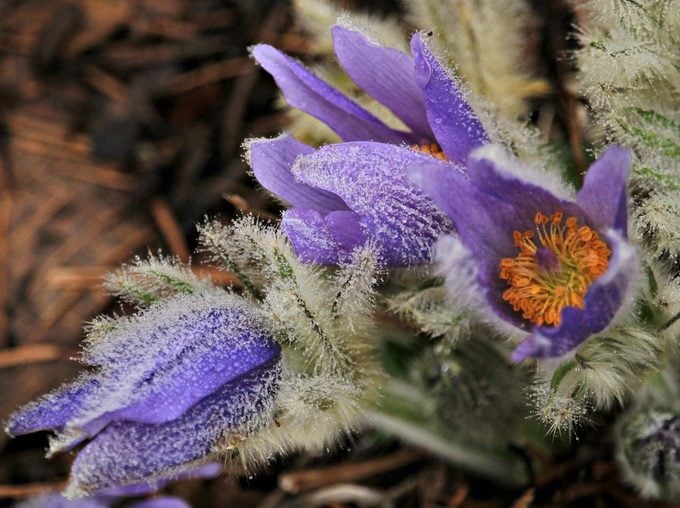Top 10 Low Maintenance Perennials
Updated: Jun. 30, 2022
These eye-catching, reliable plants keep on growing. Low maintenance perennials will save you money and add beauty to your backyard.
When you’re at the garden center, the cost of plants can add up in a hurry. Before you know it, you’re spending $100, $200 and more on plants that you hope will work in your backyard. Beautiful and resilient plants don’t have to be a gamble, though, with these low maintenance perennials.
These plants will be back year after year, will save you money on watering (all are drought-tolerant!) and will eventually fill up a lot of space. So the next time you’re thinking about adding to your garden, stretch your dollar a little further and let our low maintenance, best-value perennial plant list be your guide.
Annuals vs. perennials — what is the difference?
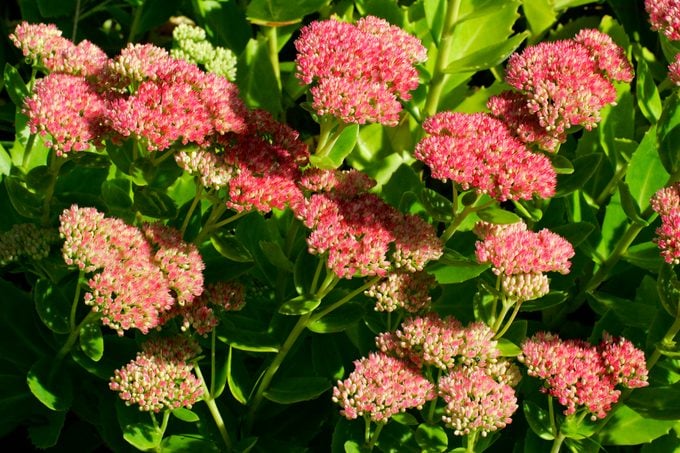
Sedum
(Sedum species, Zones 3 to 10)
You rarely have to worry about whether this one of our low maintenance perennials will come back each year. One of the most reliable growers around, sedum offers delightful color well into fall. The star-shaped blooms are a treat for butterflies, and fall-blooming varieties offer fuel to monarchs and other late fliers on their journey south.
Why we love it: It’s one of the first perennials to emerge in spring, and then it offers interesting foliage until it begins blooming from late summer through the end of fall.
Discover more easy perennials that anyone can grow.
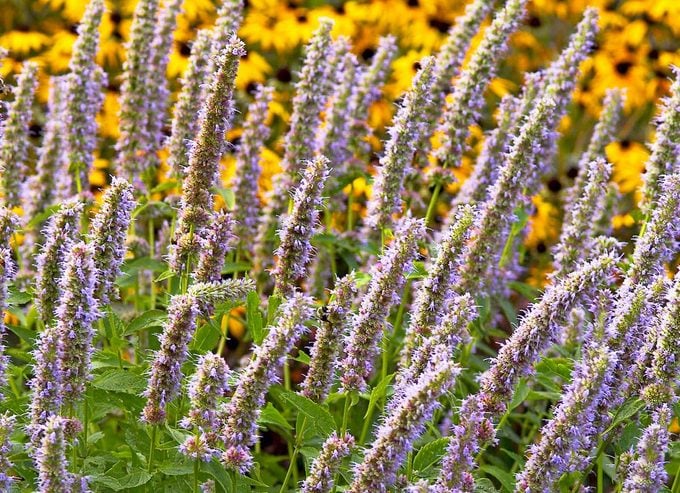
Agastache
(Agastache species, Zones 5 to 11)
This drought-tolerant perennial often gets forgotten, but it’s the perfect addition to any wildlife habitat, with flowers that attract hummingbirds and butterflies all summer long. Late in the season, the seed heads provide food for birds. You can choose just about any flower color you want, with cultivars offering orange, pink, red, purple and blue blooms.
Why we love it: The tall blooms offer a great backdrop to just about any perennial or annual you add to the landscape.
These are the best perennials to plant in full sun.
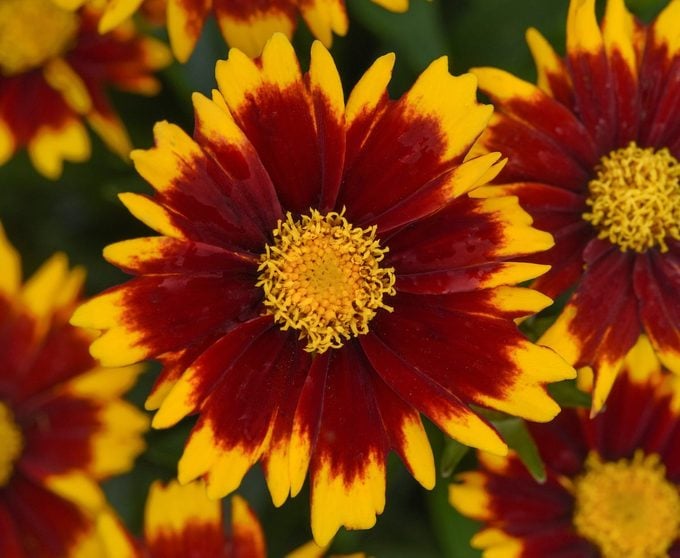
Coreopsis
(Coreopsis species, Zones 3 to 9)
Though you can also find this bloom as an easy annual to grow from seed, make sure you pick up the perennial version, too. It loves the sun and thrives in dry conditions. New varieties offer pretty alternatives to the traditional yellow blooms, and the orange, pink and bright-red -varieties add a color twist to this favorite.
Why we love it: Nothing beats the heat like this tough beauty. It just keeps going and going!
Discover the top 10 fall blooming perennials for your garden.
Pasque Flower
(Pulsatilla vulgaris, Zones 4 to 8)
If you’re a gardener who appreciates unique blooms, it’s time you made room for pasque flowers. Early-spring bloomers, mostly with purple blossoms, they add an element of texture to your garden. While it’s not the first perennial many gardeners think of, the drought-tolerant, easy-care pasque flower definitely deserves top honors.
Why we love it: Once the flowers are gone, attractive ornamental seed heads last for several weeks.
Love the color? Take a look at these purple flowers that attract hummingbirds.
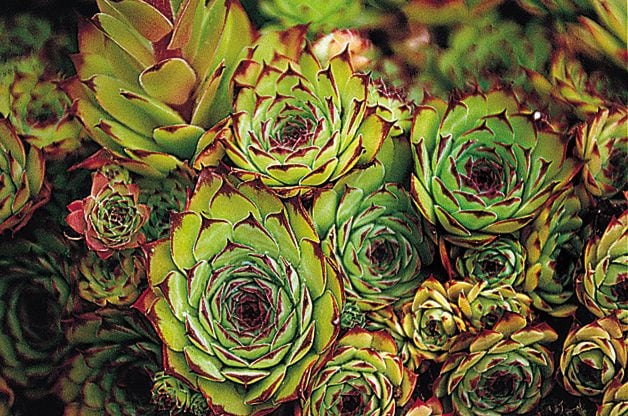
Hens-and-Chicks
(Sempervivum tectorum, Zones 3 to 8)
We love this tough plant with its clusters of rosette-shaped leaves. It seems to have limitless possibilities: Grow it in unusual shallow containers (like a pair of old high-heeled shoes!) or in rocky soil and challenging spaces. Newer cultivars are better than ever, so check them out at the garden center.
Why we love it: It’s very forgiving. It can go days without water, then it perks right back up once you remember.
Learn how, when and why you should divide perennial plants.
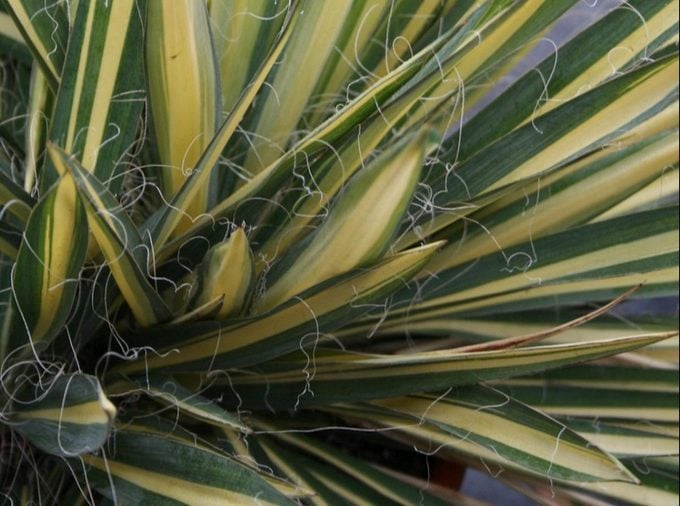
Yucca
(Yucca filamentosa, Zones 4 to 10)
If “more for less” is your motto, yuccas are a must-have. This enormous grower can get up to 5 feet wide, so instead of buying four or five plants for an area, fill the same space with just a couple of yuccas. The spiky leaves are a stunning focal point throughout the season, and tall white flowers bloom in midsummer.
Why we love it: The foliage lasts all season, so the blooms are just a bonus.
Check out these perennial plants with year-round bird benefits.
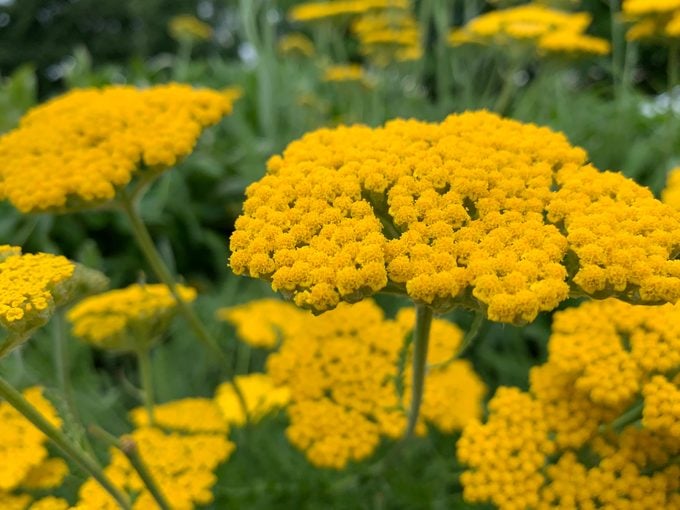
Yarrow
(Achillea species, Zones 3 to 9)
What’s not to love about yarrow? This selection on our low maintenance perennials list can grow in almost any condition. It blooms all the way until frost, and it offers lovely color both in the garden and as a cut flower. Now all you have to decide is which cultivar to grow! Moonshine has light-yellow blooms; Red Velvet offers a nice strawberry-pink alternative. Just pick one that is not too aggressive, and you’ll be on the road to success.
Why we love it: Though yarrow is sometimes considered a weed, the right cultivar is like discovering hidden treasure!
Be sure to never grow these poisonous and invasive plants in your yard.
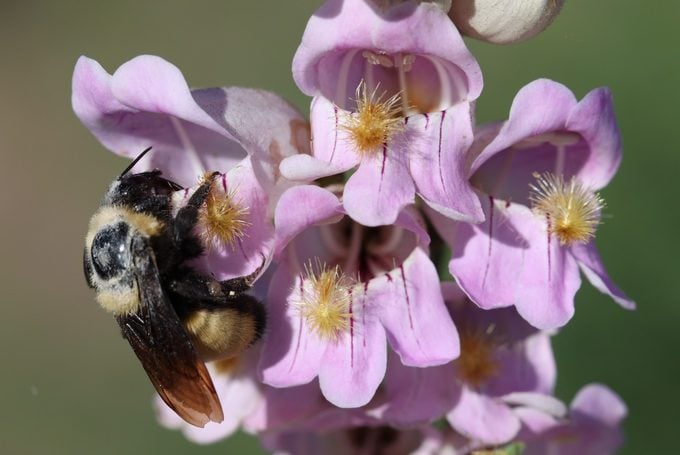
Penstemon
(Penstemon species and cultivars, Zones 3 to 8)
Don’t let the delicate tubular blooms fool you. Penstemon plant is tough, blooming early summer to fall. The signature perennial is mostly known for its scarlet flowers, but you can also find cultivars in purple, white and pink. For a distinctive look, try Husker Red, which sports reddish foliage and pinkish-white blooms.
Why we love it: With its red, tube-shaped blooms, it’s easy to see why it’s a hummingbird favorite.
These are the best flowering perennials that bloom all summer.
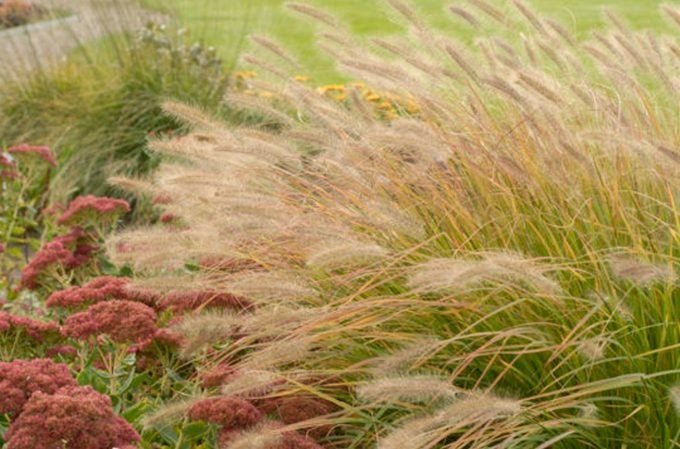
Ornamental Grasses
Never underestimate the power of ornamental grasses. They are the perfect garden backdrop, adding texture, color and fullness to any space, making them one of our favorite low maintenance perennials. Look for switchgrass (Panicum virgatum, Zones 3 to 9) for splendid fall color and also feather reed grass (Calamagrostis x acutiflora) for a stately sweep up to 5 feet. Ask local garden center experts for a native grass recommendation, since they’ll know what works best in your area and steer you away from invasive varieties.
Why we love it: It doesn’t matter what your style is, there’s an ornamental grass to fit any garden space.
Here’s when you should cut back ornamental grasses.
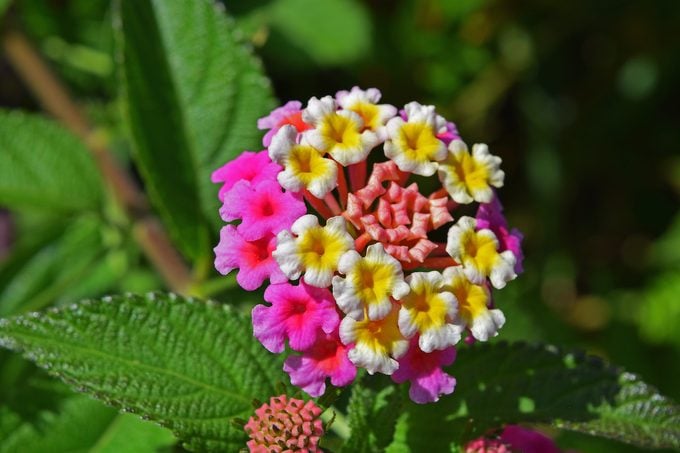
Lantana
(Lantana camara, Zones 8 to 11)
What a beauty this abundant bloomer is! While lantana is really considered a perennial only in warmer regions, you can keep this lovely plant going by using it in containers and then overwintering it indoors. If you’re successful, you’ll have a garden all-star for years to come.
Why we love it: The compact cluster of blooms has a tropical feel, and butterflies love it.
Next, check out these annual and perennial butterfly garden designs.

